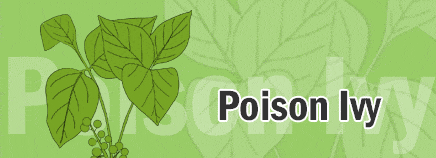
Leaves of three, let them be! You’ve probably heard that little rhyme about poison ivy. But did you know that poison ivy, poison oak, and poison sumac all contain the same rash-causing substance? It’s urushiol, a colorless, odorless oil (or resin) contained in the leaves of the plants.
Signs and Symptoms of Poison Ivy

Urushiol is considered an allergen because it causes an allergic reaction — which takes the form of a rash, itching, and sometimes swelling. About 60% to 80% of all people get a reaction to urushiol, which can appear within hours of contact or as much as 5 days later.
Typically, the skin becomes red, itchy, and swollen and blisters will appear. After a few days, the blisters may become crusty and start to flake off. The rash from poison ivy takes 1 to 2 weeks to heal.
When to Call the Doctor
Consult your doctor if your child has any kind of rash, especially with a fever. If poison ivy or a similar plant caused the rash, the doctor might recommend cool showers and a soothing lotion, such as calamine lotion.
For more severe cases, doctors sometimes prescribe pills or creams that contain antihistamines or steroids (not the same type of steroids that bodybuilders use) to decrease itching and redness.
Prevention
Poison ivy can grow anywhere — from the woods to suburban backyards. And it’s hard to identify: Not only can the green leaves of poison plants blend right in with other plants and brush, but there are several types of poison ivy, and each one can look different depending on the time of year.

It’s also possible to get a rash from poison ivy without ever venturing into the woods or directly touching a plant. Urushiol can be transferred from one person to another. Plus, kids can pick it up from anything that’s come in contact with the oil, including pets. Urushiol can even travel through the air if someone burns some of the plants to clear brush.
The leaves of poison ivy plants release urushiol when they’re bumped, torn, or brushed against. (When the resin is released, the leaves may appear shiny or you may see black spots of resin on them.) Once released, urushiol can easily get on skin.
Here are some tips to help kids avoid getting a rash from poison ivy:
- Teach them how to identify poison ivy, oak, and sumac, so they can steer clear of them (they should be especially careful of plants if the leaves look shiny).
- Tell them to avoid areas where you know there’s poison ivy.
- Have them wear long sleeves and long pants when in areas where poison ivy might grow.
- If your dog has been out exploring the woods, give him a bath to wash off any urushiol oil that may be on his coat.
If your kids come into contact with urushiol oil, have them try to wash it off their skin right away by taking a shower and using lots of soap.

